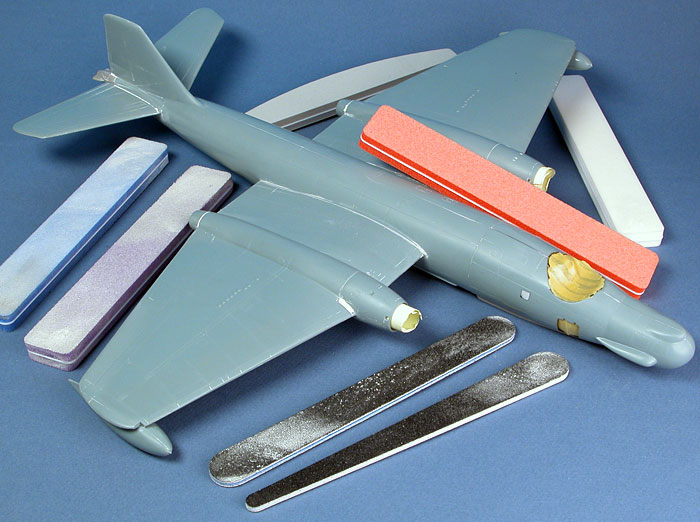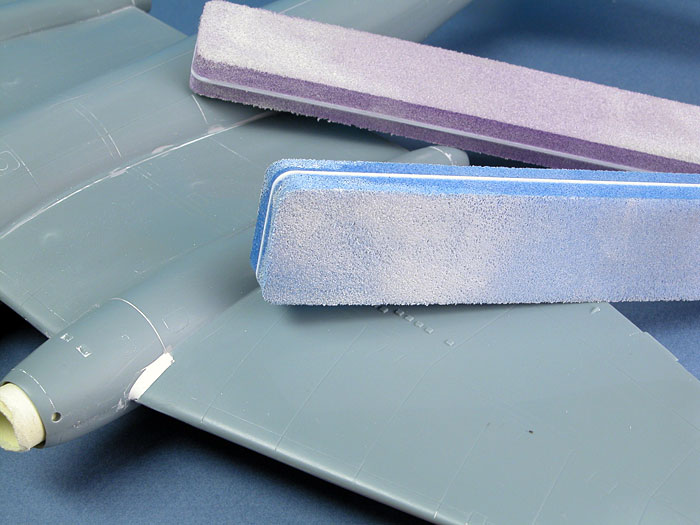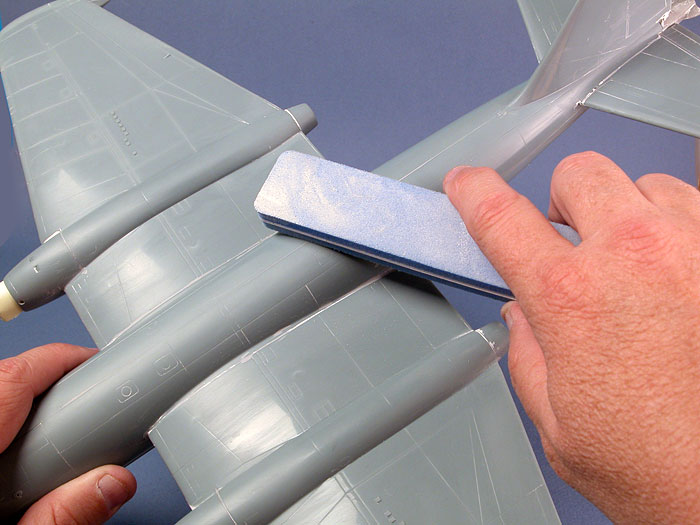|
MasterCasters'
Sanding & Polishing Sticks


HyperScale is proudly supported by
Squadron
MasterCasters has expanded into the tools and
accessories business with a new line of sanding and polishing
sticks.
There are two basic categories of sanding stick on
offer. The first is a conventional rigid stick available in the
fairly coarse grades of 80 (both sides), 120/240 grit, and 100/180
grit.
The second category is something new to me - "Sponge
Sanders". These look like large traditional sanding sticks at first
glance, but they have a flexible core in the middle. The sanding
surface on each side supported by a sponge base. The grades
available are as follows:
-
80
-
100
-
180
-
600
-
280 - this is straight on one side and crescent
shaped on the other.
-
"Miracle Shiner" - this is a buffing and
polishing stick. Although the grade is not quoted, one side is
probably around 3,000-4,000 grit, with the other around 6,000 -
12,000 grit
The 80 grit (purple) and 180 grit (blue) are
pictured below.

The grade numbers might seem low, but the cushioning
effect of the sponge means that the relatively coarse grits do less
damage to the material being sanded than traditional sanders of
equivalent grit.
I found that the purple 80 grit stick, used dry, was
perfect for removing raised seams; and for sanding back Milliput,
Liquid Paper and Mr Surfacer without pulling the filler out of
narrow seams and steps. The blue 180 grit stick was a logical
follow-up, smoothing the plastic surface to a satin finish, and
feathering the edges of the filler. When used wet, the sticks will
produce a finer finish.
I was pleased to find that, despite their length and
width, the sponge sanders could get into difficult areas and tight
curves around wing roots thanks to their flexibility.

I also used the black sanders (both the 80 grit and
the 100/180 grit) to sand back large sections of resin casting
blocks. These sanders were excellent for this heavy-duty task.
Unlike the cheap sanding sticks that I sometimes buy
at the local Chemist shop, these sticks seem to be very durable.
There is no evidence of reduced effectiveness even after several
serious sanding sessions.
MasterCasters' new range of sanding a polishing
sticks represents a very useful new sanding system, especially for
preparation of resin parts and sanding fillers and plastic ridges on
models of all types.
Recommended.
Thanks to Jay from MasterCasters for the sample
Rreview Text and all Images Copyright © 2006 by
Brett Green
This Page Created on 17 September, 2006
Last updated
17 September, 2006
Back to
HyperScale Main Page |
Home | What's
New | Features
| Gallery |
Reviews | Reference
| Forum
| Search